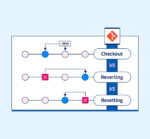The foundation of the web, HTML, Hyper Text Markup Language, today becomes so overshadowed by design and design-driven web world that one may easily forget that it, and it alone, is the structural base upon which web pages are built. The question arises, though: what if you were to construct an entire website without any CSS styling? Creating an HTML structure alone without introducing styling or layout enhancements, we will here investigate the implications of pure HTML websites regarding their possible functional capability as well as real-life viability of web development without CSS.
Why Consider a Website Without CSS?
Building a site without CSS sounds kind of weird to a most modern developer. That’s simply because CSS stands for Cascading Style Sheets, the ones that make sites appealing and all that jazz—in other words: colors, spacing, font, layout, reactions, and action. This may not mean that, however, there is no reason someone would be making a test or considering developing a site only in HTML-some of the reasons are given below:
- Education: How browsers interpret raw HTML.
- Minimalist design: Specific ultra lightweight or fast loading sites.
- Structures for accessibility testing: Hierarchies for evaluating content and structures.
- Structure fallback: In situations when styles do not get loaded.
It could strip off aesthetics and focus mainly on content, semantics, and structure.
What Is a Pure HTML Website?
A pure HTML website is devoid of any CSS, external or internal. Layouts and content are defined using only the HTML tags. Fonts, colors, margins, and responsiveness have no styling applied to them. Everything appears in what the browser’s default style offers.
<!DOCTYPE html>
<html>
<head>
<title>HTML Only Website</title>
</head>
<body>
<h1>Welcome to My HTML Only Website</h1>
<p>This is a paragraph of text.</p>
<ul>
<li>Home</li>
<li>About</li>
<li>Contact</li>
</ul>
</body>
</html>
Here’s a basic example of what such a page might look like:
This HTML without styling renders a very basic, black-and-white page with default fonts and spacing.
Benefits of Website Development Without CSS
Though not very popular, CSS-free development offers some quite interesting benefits:
1. Speedier Initial Load
No external style sheets=less HTTP requests=faster initial load. Suitable for ultra-lightweight projects or for those operating in a low-bandwidth environment.
2. Concentrate on Content and Document Structure
Without styling, the developer’s mind is forced on a purist approach to content quality, semantic HTML, and logical document flow.
3. Excellent for Prototyping Structure
No CSS Website for prototyping skeletal framework of a website before visual designing becomes part of the plans.
4. Accessible by Default
No styling is done visually so that it would interfere with screen readers and keyboard navigation. Hence these sites could be surprisingly rigorously accessible when written semantically.
Limitations of Building an HTML Only Website
Of course, this experiment comes with significant constraints:
The experiment, however, has some serious limitations:
1. Absolutely No Visual Branding
Without CSS, you cannot set your colors, fonts, or layouts. The site will simply look generic and outdated.
2. Totally Lacking Layout Control
With HTML alone, it is impossible to achieve modern layouts such as grids, flexbox, and responsiveness.
3. Bad User Experience
While the content may exist, users still expect to find some sort of visual cue guiding them through navigation, hierarchy, and interaction. No such cues exist in a plain HTML site.
4. Very Unprofessional
In most industries, a totally HTML website cannot meet professional standards or user expectations.
When Does HTML-Without-Style Make Sense?
- Offline documentation: For internal or embedded systems, there is no need for visuals.
- Fallback: When the styling do not apply for technical reasons.
Teaching: To teach web structure, accessibility, or content-first development.
Conclusion: Is It Viable?
Albeit a useful learning experiment, creating an entire website in HTML is hardly ever practically viable. The modern web thrives on a good balance among HTML, CSS, and JavaScript. This said, it is a good idea to take a shot at going as far as possible into web development without CSS; that way, you can appreciate how far web tech has developed.
So, does building a pure HTML website become an option? Yes.
Should you? Only for the sake of an odd use case.
If anything, this serves to reinforce that good content and clean structure remain, even today, the heart of the web—long before one even applies CSS polish.









